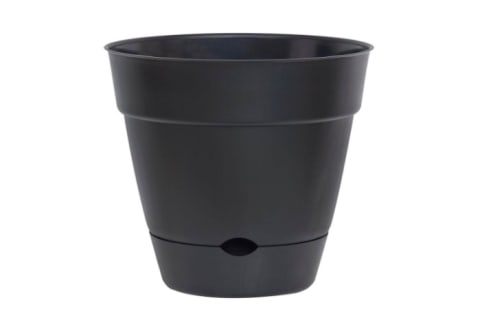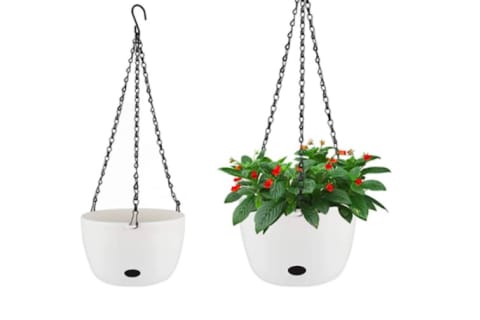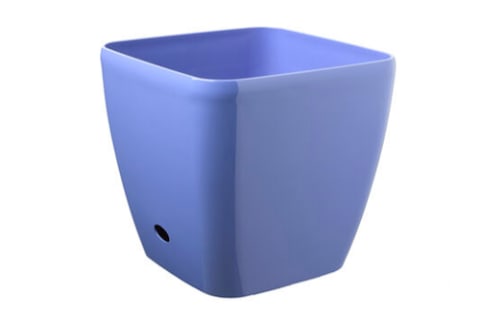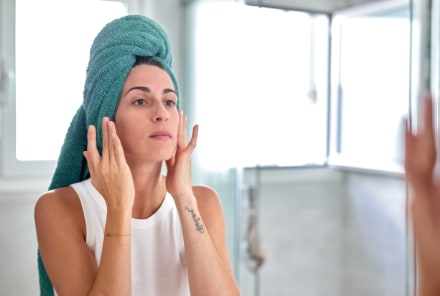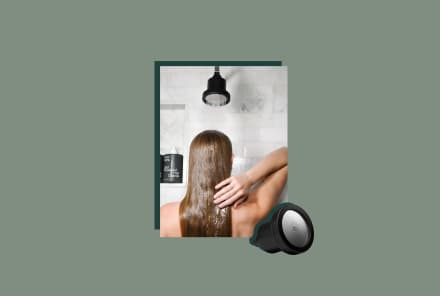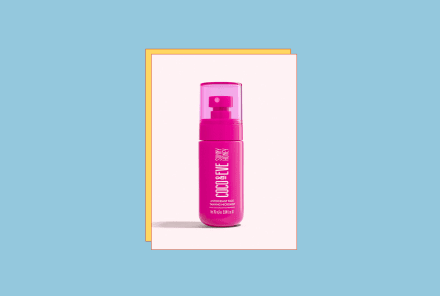Advertisement
Yes, Self-Watering Planters Work: Here's How To Use 'Em

Over- and underwatering is the root of many houseplant woes: Yellow spots, curling leaves, and a droopy appearance can all be traced back to the water supply. It's tricky to know exactly how much water your plant needs at any given time, which is where subirrigated or "self-watering" planters come in. Essentially, they allow plants to hydrate themselves so you can sit back and toss that weekly watering schedule out the window.
How do self-watering planters work?
Most people water their plants from the top, even though plants actually absorb water from the bottom-up. Self-watering planters, on the other hand, usually have water reservoirs that sit at the bottom of a pot to be drawn from as needed through a process called capillary action. Essentially, a plant's root system attracts water from the reservoir and transports it upward due to the water's adhesion, cohesion, and surface tension (thank you, physics!). Once it has reached the plant's leaves, the water can be used for photosynthesis and other essential plant processes.
When a houseplant receives too much water, that water sits at the bottom of the pot, oversaturates the roots, and makes capillary action impossible, which is why overwatering is a leading cause of root rot and plant death. But since self-watering planters keep the water supply separate from your actual plant, they don't drown roots.
When a houseplant doesn't get enough water, the water it does get tends to stay on top of the soil, drying out the roots below. As long as your self-watering planter is refilled with water periodically, you don't have to worry about this either.
What are the benefits of self-watering planters?
They take the guesswork out of watering.
Since self-watering planters allow plants to sip water as needed, they don't require as much from you as a plant parent. "The plant itself is doing that work of deciding how much water to draw out," explains Rebecca Bullene, the founder of Brooklyn-based plant shop Greenery Unlimited. "You don't actually have to worry about the increment." For this reason, self-watering planters can be good for outdoor plants, too, since they ensure you won't accidentally double-water a plant after a rainstorm.
They protect against pests.
In addition to protecting the bottom of your plant from overwatering and root rot, self-watering planters also keep the top of your soil from getting too moist and attracting pests like fungus gnats.
They give your plant some much-needed consistency.
While an inconsistent watering schedule may seem like par for the course, it can actually stress a plant out: "Plants really crave consistency: They want to have consistent moisture levels. They want to have consistent light. They want to have consistency in temperature," says Bullene. "And as humans, we're a very inconsistent species." With self-watering planters, you don't have to worry about leaving your plant out to dry the next time you go on vacation or have a crazy week at work.
They make plant maintenance easier.
Self-watering planters can be especially convenient for hanging plants or plants that live in hard-to-reach areas since they'll cut down on the number of times you need to pull out the step stool or shimmy your way over to them.
How do you use them?
There are two main types of self-watering planters: One has a removable water saucer at the bottom of the pot, and the other has a tube that runs alongside of it. You can also find self-watering inserts that turn normal pots into a self-watering one. These all function in a similar way; the difference is largely aesthetic.
All you need to do to keep them running smoothly is refill their water chamber when it runs low. The number of times you'll need to do so will depend on the type of plant, sunlight levels, and time of year, but it'll usually be every three weeks or so.
In between refills, Bullene says you can continue to water the top of your plants lightly every so often to raise humidity levels around their leaves. Misting your plant's leaves, then wiping them down with a microfiber towel periodically can also ensure that they don't get clogged with dust, which can mess with their ability to photosynthesize. Other than that, your self-watering planter should handle everything else in the water department.
Are there any plants that shouldn't go in self-watering planters?
Certain plants with shallow roots (think succulents like snake plants and cactuses) will not benefit from being placed in a self-watering planter since their roots don't extend far enough into soil to take advantage of capillary action. However, these plants also tend to be pretty forgiving and require less water anyway. Most other plants (Bullene estimates a good 89% of 'em) have deep enough roots to thrive in these containers.
Self-watering containers tend to cost about the same as a standard planter, but if you're looking to save money, you can DIY your own pretty easily. Simply fill a large bowl with water and pop the bowl on an elevated surface next to your plant. Then, place one end of a string in the water so it's fully submerged (you might want to use a paper clip for this), and place the other end in your plant's soil, about 1 to 2 inches down. Make sure that the string is on a downward slope so that water can travel from your bowl down to your plant whenever it gets thirsty.
The bottom line.
Self-watering planters are a convenient option for plant parents who struggle to keep up a consistent watering schedule or travel often. They're easy to use, take the guesswork out of watering, and are suitable for most plant species.
Watch Next
Enjoy some of our favorite clips from classes
Enjoy some of our favorite clips from classes
What Is Meditation?
Mindfulness/Spirituality | Light Watkins
Box Breathing
Mindfulness/Spirituality | Gwen Dittmar
What Breathwork Can Address
Mindfulness/Spirituality | Gwen Dittmar
The 8 Limbs of Yoga - What is Asana?
Yoga | Caley Alyssa
Two Standing Postures to Open Up Tight Hips
Yoga | Caley Alyssa
How Plants Can Optimize Athletic Performance
Nutrition | Rich Roll
What to Eat Before a Workout
Nutrition | Rich Roll
How Ayurveda Helps Us Navigate Modern Life
Nutrition | Sahara Rose
Messages About Love & Relationships
Love & Relationships | Esther Perel
Love Languages
Love & Relationships | Esther Perel
